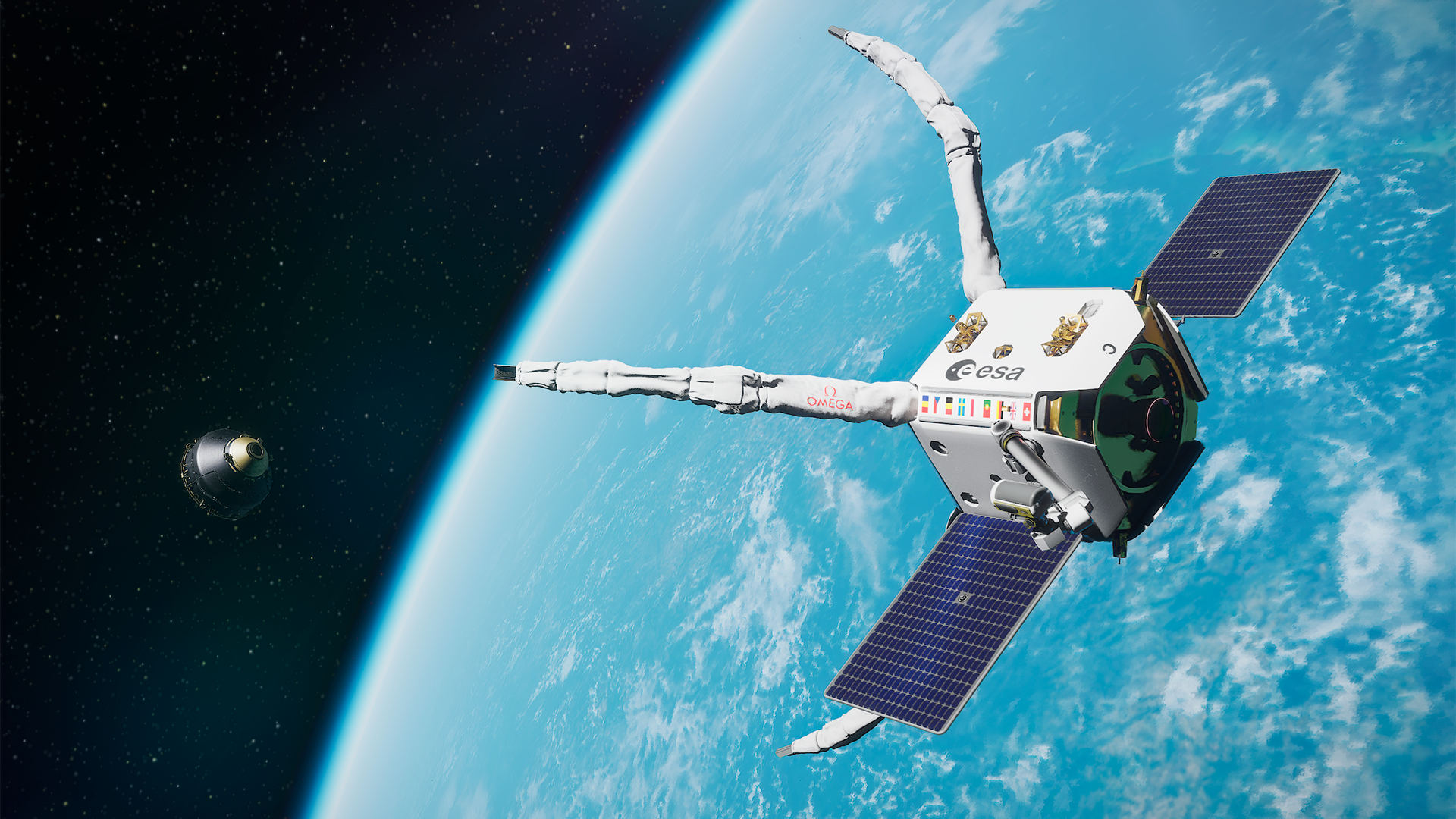
WASHINGTON — A payload adapter that is the target of a European debris cleanup mission may have itself been damaged by a debris impact.
The European Space Agency said Aug. 22 that it was informed 12 days earlier by the U.S. Space Force’s 18th Space Defense Squadron, responsible for space domain awareness activities, that it had identified several pieces of debris in the vicinity of a larger payload adapter called Vespa that has been in low Earth orbit since a Vega launch a decade ago.
The new debris, ESA said, likely originated from Vespa after a collision with a piece of debris too small to be tracked. Follow-up tracking by the 18th Space Defense Squadron as well as European facilities indicates that the payload adapter remains intact. ESA did not state how many pieces of debris from Vespa were bring tracked.
The incident is ironic because the Vespa adapter is the target of an ESA-backed mission to remove it from orbit. ESA selected Swiss startup ClearSpace in 2020 to fly a mission that would grapple the 113-kilogram adapter and remove it from orbit, awarding it a contract worth 86 million euros ($93 million).
That mission, called ClearSpace-1, passed a review at the end of 2022 that marked the end of its initial design phase. ClearSpace-1 is scheduled to launch in 2026 on a Vega C rocket. The company raised 26.7 million euros in January to support work on of the mission.
ESA said in the statement that it was too soon to know if the debris impact would affect the ClearSpace-1 mission: “The development of the ClearSpace-1 mission will continue as planned while additional data on the event is collected. ESA and industrial partners are carefully evaluating the event’s impact on the mission.” That analysis, ESA added, would take several weeks to complete.
ESA has made space safety, such as mitigating and remediating orbital debris, a priority. In July, ESA carried out an “assisted reentry” of an Earth science spacecraft, Aeolus, that lacked propellant needed to carry out a deliberate, targeted reentry at the end of its mission. That effort ensured the spacecraft reentered over uninhabited territory to avoid any risk to people on the ground from spacecraft debris that survived reentry.
ESA unveiled plans for a “Zero Debris Charter” during the Paris Air Show in June with the support of three major European satellite manufacturers: Airbus Defence and Space, OHB and Thales Alenia Space. Details about the charter have yet to be published, but the goal is to prevent the creation of new debris in Earth orbit.
“The principle is a very simple one,” said ESA Director General Josef Aschbacher at the event announcing the charter. “The Zero Debris Charter is a principle where we would like to ensure that there is zero debris left behind in space.”
ESA, though, has also contributed to the orbital debris problem. The defunct Envisat spacecraft was abandoned in low Earth orbit when it malfunctioned a decade after its launch in 2002. The large size of Envisat, which is predicted to remain in orbit for up to 150 years, makes it a potential source of debris from collisions like the one the Vespa adapter suffered.
A 2020 study by a group of space sustainability experts ranked Envisat 21st on a list of the 50 “statistically most concerning” debris objects in Earth orbit. Envisat was the highest-ranked satellite on the list, following a family of 20 Zenit rocket bodies all in similar orbits.